Physical Infrastructure in the Material Measurement Lab
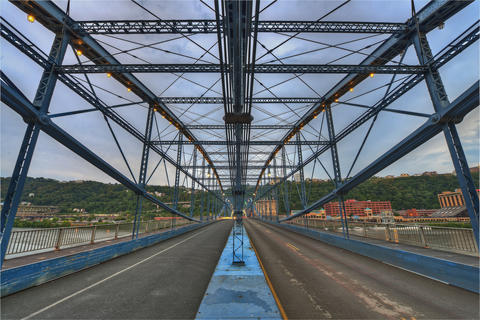
Smithfield Street Bridge, Pittsburgh, Pa.
One in nine bridges are structurally deficient, according to the American Society of Civil Engineers. The U.S. has more than 4,000 deficient dams, which have an average age of 52 years.
In 2017, they gave the nation’s transportation infrastructure a grade of “D+.”
We need to keep our citizens safe, prioritize the nation's many urgent infrastructure projects, and enable adoption of more durable, lower cost materials for infrastructure renewal.
Read the American Society of Civil Engineers 2017 Infrastructure report here. Find information about bridges and dams on pages 27-35.
The Material Measurement Lab develops methods to test and predict the health of critical connections in bridges and buildings and nondestructive evaluation techniques for structures such as in-service bridges that can’t be dismantled for examination. We also provide measurement methods for the new materials increasingly used in fuel pipelines; for the performance of structural steel when it is stressed by fire, explosion, impacts, and natural disasters; for the availability and sustainability of our water infrastructure; and for new composites that are stronger and more cost effective than traditional materials. And that's just our more recent work: We have a long history of supporting the steel and concrete industries with reference materials for quality assurance.
Learn More
Bridge and Pipeline Safety
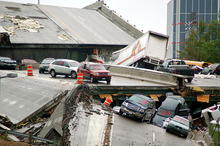
After the 2007 I-35 bridge collapse in Minneapolis, Minnesota--which tragically killed 13 people and injured 145--we began work to assure the safety of hundreds of truss bridges across the U.S. Our collaboration with the Federal Highway Administration and American Association of State Highway and Transportation Officials (AASHTO) examines the failure of bridge gusset plates in fine detail. The test results will help AASHTO revise bridge design and load rating guidance so that the design flaw that led to the I-35 bridge collapse doesn't happen again. Watch a video overview about this work, or get the technical details.
From 2000 to 2010, there were more than 2,500 pipeline accidents resulting in several hundred fatalities and injuries and billions of dollars in lost revenue and repair costs. As the industry adopted new design methods and higher strength materials, they turned to us for new methods for assessing the reliability of the resulting pipelines. Our test facilities also measure the effects of the alternative fuels ethanol and hydrogen, which accelerate the degradation of pipeline materials.
Prioritizing Projects
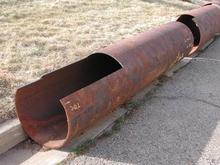
The country's essential infrastructure of roads, bridges, pipelines, dams, and railroad lines is badly in need of repair or replacement. How do infrastructure owners choose which projects to work on first? Our work helps
- ensure the accuracy of steel "hardness testing," which evaluates steel alloys for weakening, and can help determine if a piece of infrastructure should be replaced
- calibrate the equipment that can measure flaws and weaknesses in existing infrastructure without damaging it or taking it out of service
- set standards for acoustic inspection methods, which are used to "listen" to vibrations inside structures to detect abnormalities
Ensuring Quality
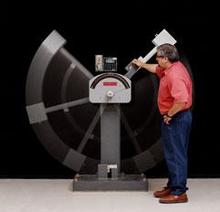
As your car crosses a bridge, you may not think about the quality of the steel or cement that it's made of. But we did. Our experts developed measurement methods and test materials to help engineers choose the right materials for buildings, roads, bridges, and other critical structures.
Charpy impact testing determines the fracture resistance of steels used in pipelines, bridges, nuclear facilities, and ships. We provide calibration reference materials for Charpy impact test equipment, helping to ensure the correct operation of more than 1,500 machines at the test labs that industry relies on for quality control of materials.
Tests for hardness are the most common methods industries use to assess the strength of materials. Differences in test results can lead manufacturers to reject materials that are, in fact, suitable or—even worse—accept materials that are deficient. We provide reference materials for calibrating hardness testing machines and led the development of standards for test methods with ASTM International and the International Organization for Standardization.
ASTM International sets standards for cement that manufacturers voluntarily comply with, often using our reference materials to support the chemical analysis of their products. Our reference materials represent the broad variety of cements in this $1 trillion-a-year industry, including newer mixes that incorporate fly ash and slag.
Testing Materials in Extreme Conditions
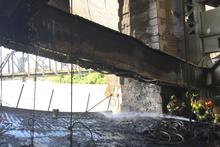
Although structural engineers can predict how materials will perform under usual conditions, the performance of structures when subject to fire, explosion, impacts and natural disasters is less well understood.
To help engineers build structures that stay intact in the worst conditions, our experts evaluate the performance of structural steel at the high temperatures generated by fires and high rates of strain produced by explosions or impacts. We conducted the metallurgical analysis of structural steel from the World Trade Center collapse, producing results that have been used to improve building codes and standards for certification of fire-resistant steel. We also lead efforts in ASTM and ISO to establish standards for the qualification of these materials.
Safeguarding Water
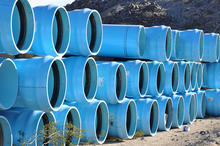
Prolonged droughts, the depletion of aquifers, contaminants, and failing pipelines and other water-carrying and storage infrastructure threaten the ready supply of water that most of us rely upon. Our measurement experts provide tools to
- assess water quality, detecting dozens of contaminants from industrial and agricultural chemicals, to pharmaceuticals and microbes
- choose materials for water treatment
- evaluate the materials used in water pipelines, and study corrosion of those materials caused by microbes
Sustainable Infrastructure
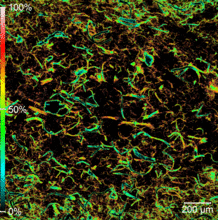
The U.S. has the opportunity to repair and replace our aging infrastructure with advanced composite materials—polymers that are strengthened with fibers or other additives. Compared to traditional materials, composites offer many advantages: high-strength, corrosion resistance, light weight, and reduced installation and transportation costs. American builders and infrastructure owners have been slower to adopt these new materials, compared to other countries.
NIST helps to accelerate the use of advanced composites in infrastructure projects by convening members of industry, government, and academia to identify and overcome challenges, and by contributing materials science expertise, particularly for measures of durability.
Contacts
-
(303) 497-3445

